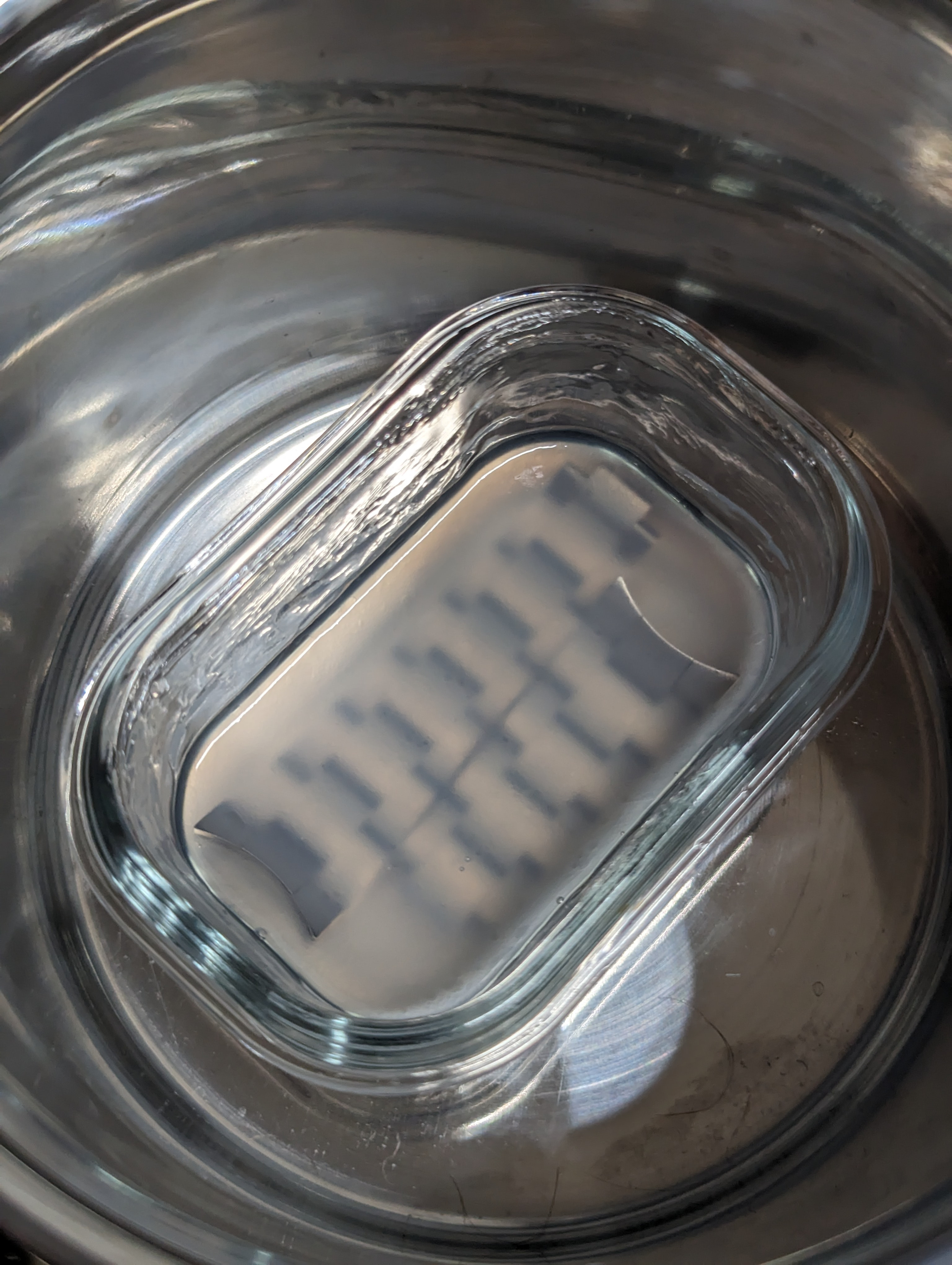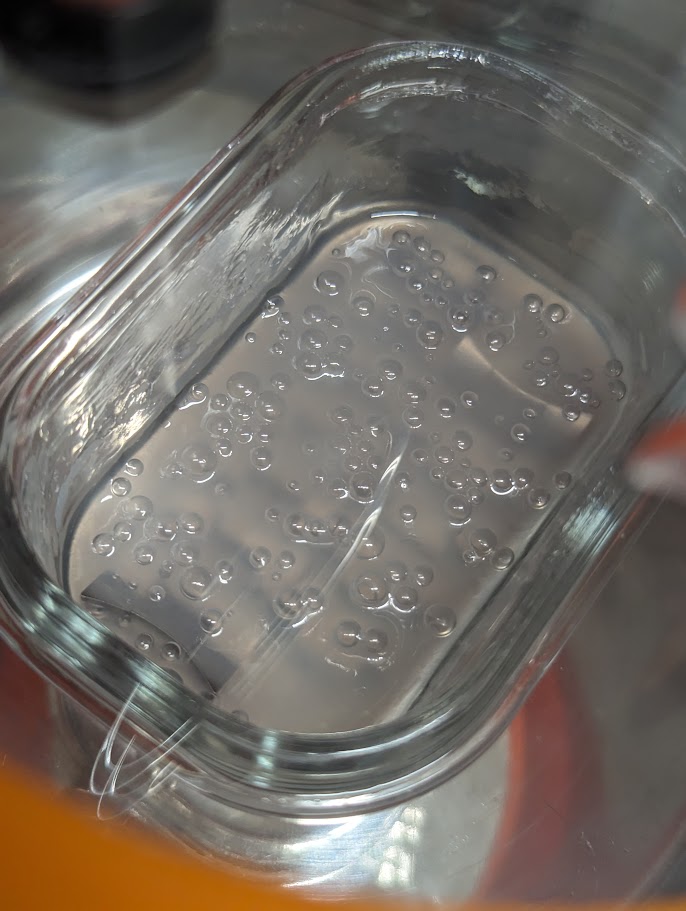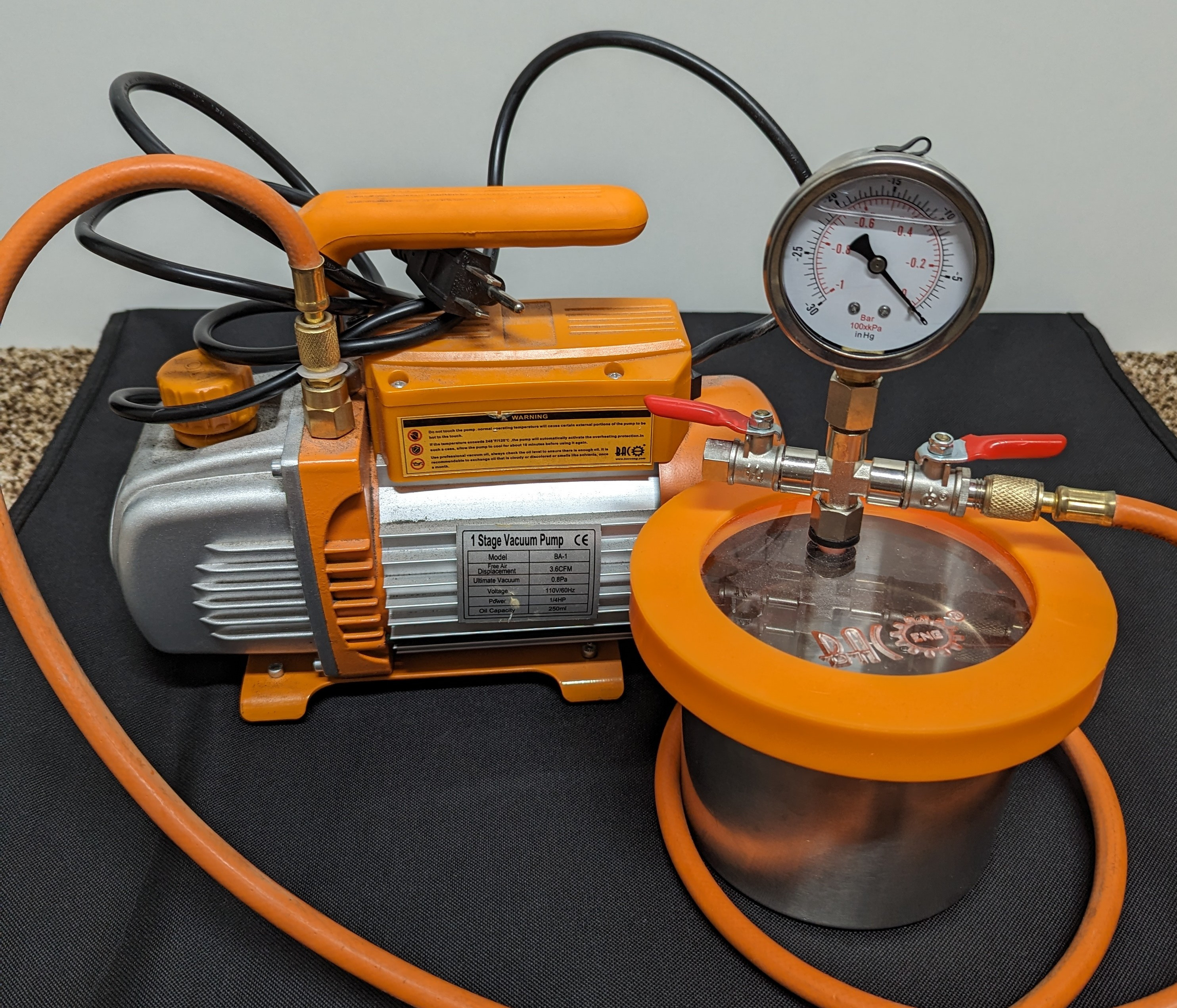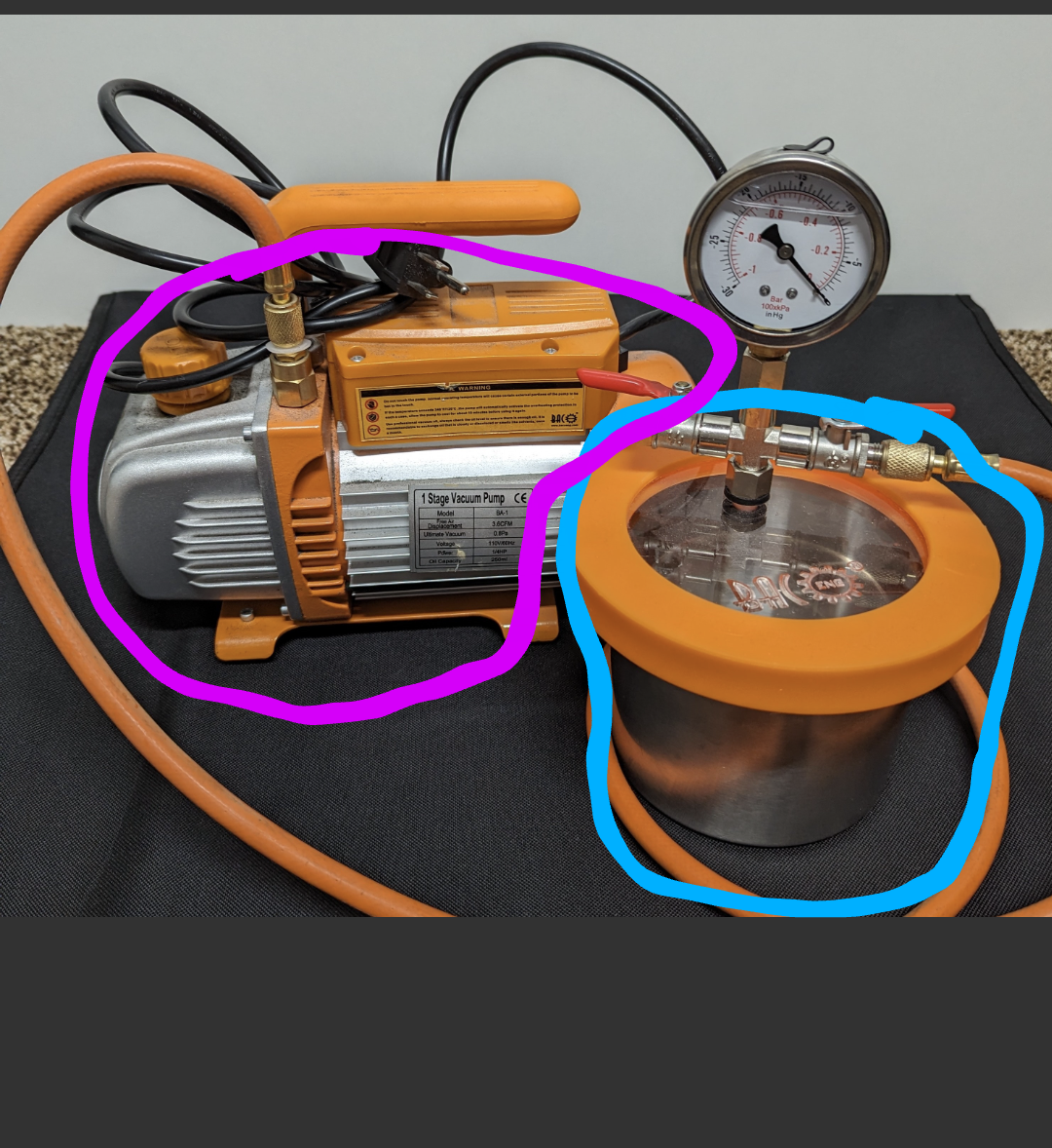I've never posted anything here before, but I've been working on watches for a while, and I have a bracelet lubrication method that I think is worth sharing. If you care about the feel of your bracelet, read on. If you like working on watches, read on. If you are just bored and like reading some weird guy's ramblings about a cool bracelet lubrication method, read on.
If you've ever held a genuine Rolex, you may have noticed how incredibly solid and buttery smooth it feels. I became obsessed with this. The reps have done an amazing job at replicating the aesthetics of the watch, but I wanted more. Out of the box, they look great, but almost all of them have that sort of..."clickety clackety" sound and feel. Unfortunately, experiencing a gen Rolex bracelet ruined it for me - I wanted the true feel of a Rolex bracelet. Even went to the extent of buying a genuine bracelet so that I could compare it closely with rep bracelets to see exactly where the difference lies. Here's what I learned: they look exactly the same. Even under magnification, I really can't tell a difference. Perhaps the polishing is a few percent better in quality, but the brushing is dead on the same. There's really nothing (worth the price) to chase when it comes to appearance. What was more surprising is that the tolerances were basically the same too. I expected the genuine Rolex bracelet to have less "play", which would be the reason for it feeling so much smoother. But that isn't really the case. Both the gen and the rep bracelets have essentially the same amount of wiggle from side to side, in/out, twist, etc. So that leads me to believe the difference is simply in the friction between bracelet elements. i.e. Rolex has a finer polish on the bracelet pins and holes than the reps, which leads to smoother, lower-friction articulation of the bracelet. Unfortunately, I doubt that reps will ever truly replicate this, as aesthetics are the priority, and most people seem to be perfectly happy with the feel of their bracelet. Many of you have already discovered a fix for what I'm describing, and therefore recommend lubricating the bracelet to get that smooth feel.
Part 2 of the fix: air pressure. Here's the hard part, and don't hate me if you've read everything up to this point, want to do this at home, but don't have the equipment. A vacuum pump is needed. Create the alcohol/grease mixture to get it about the consistency of honey. Place the mixture in a small, flat container, large enough for both halves of the bracelet (remove the clasp) to lay flat in. Submerge the bracelet halves in the mixture. Place in vacuum pump and turn it on. All of the air inside every possible cavity will bubble out, leaving absolutely nothing but vacuum in the voids. Let it bubble for a few minutes (the air inside the bracelet will bubble out quick, any remaining bubbling is just the alcohol/grease boiling due to the lack of air pressure). Vent the chamber, and the grease will be sucked into the voids due to the differential pressure from the atmosphere pressing it into the vacuumed voids. Take the bracelet out, clean it off per usual. The bracelet will feel nice and smooth, but the real magic happens over night as the alcohol evaporates out and leaves the grease behind. The next day, it feels AMAZING. Far better than it ever did with the oils, and the best part is, it's not evaporating any time soon. I would dare say it's smoother than gen. I've been debating giving the same treatment to my gen bracelet, but I'd rather keep it as-is just as a reference. I'm a couple months out, and the rep bracelet still feels like the first day.
Anyway, that's it! You guys have all taught me so much over the years, I wanted to give this little nugget back in case anyone is interested. Some pictures below. Happy to answer any questions.
Bracelet halves submerged in alcohol/grease mixture. Glass container. Sitting inside the vacuum chamber.

Photo after pulling vacuum in the chamber. Air has already bubbled out of the bracelet. This is just the mixture boiling.

Background:
I'm about to go waaay into the weeds here, so feel free to skip ahead to "My Solution" if you're not interested in the background details.If you've ever held a genuine Rolex, you may have noticed how incredibly solid and buttery smooth it feels. I became obsessed with this. The reps have done an amazing job at replicating the aesthetics of the watch, but I wanted more. Out of the box, they look great, but almost all of them have that sort of..."clickety clackety" sound and feel. Unfortunately, experiencing a gen Rolex bracelet ruined it for me - I wanted the true feel of a Rolex bracelet. Even went to the extent of buying a genuine bracelet so that I could compare it closely with rep bracelets to see exactly where the difference lies. Here's what I learned: they look exactly the same. Even under magnification, I really can't tell a difference. Perhaps the polishing is a few percent better in quality, but the brushing is dead on the same. There's really nothing (worth the price) to chase when it comes to appearance. What was more surprising is that the tolerances were basically the same too. I expected the genuine Rolex bracelet to have less "play", which would be the reason for it feeling so much smoother. But that isn't really the case. Both the gen and the rep bracelets have essentially the same amount of wiggle from side to side, in/out, twist, etc. So that leads me to believe the difference is simply in the friction between bracelet elements. i.e. Rolex has a finer polish on the bracelet pins and holes than the reps, which leads to smoother, lower-friction articulation of the bracelet. Unfortunately, I doubt that reps will ever truly replicate this, as aesthetics are the priority, and most people seem to be perfectly happy with the feel of their bracelet. Many of you have already discovered a fix for what I'm describing, and therefore recommend lubricating the bracelet to get that smooth feel.
The "Baby Oil Bath":
The common recommendation I've found to reduce friction in the bracelet is baby oil, mineral oil, etc. Let the bracelet soak in the oil, wash off the excess, good to go. I found this to be true, and was extremely excited with how well it worked. Immediately following the bath, the bracelet felt basically indistinguishable to gen. I immediately applied this treatment to all of my Rolex bracelets, and even some other bracelets. BUT THEN, and this is where I'd like to hear everyone else's experience, after a few days or a week, I noticed that the bracelets started losing that smooth feel. Slowly, they went back to that old feeling of looseness and some of them even started feeling worse than before the bath. After doing a little more research and a few more tests with these types of oils, I discovered what I believe is the biggest problem with them: they eventually evaporate. I live in an extremely dry climate (Vegas), so perhaps mine dry out faster than others may have seen. But eventually, all of my bracelets went back to feeling loose and clickety clackety again.The Problem with Oils:
Here's the dilemma: you want something that can actually seep into the fine crevices, nooks, and crannies of the bracelet so that all of the joints become lubricated. But that quality of being a thin, low-viscosity oil which allows it to penetrate into the bracelet is also the quality that allows it to evaporate slowly and leave behind only residue, worse than before lubrication.My Solution:
Part 1 of the fix: grease. Grease is designed to be much thicker, ideal for metal/metal rubbing, and resists evaporation far better than oils. The problem is, how do you get thick grease into the joints if you can't disassemble the bracelet? What has been working for me is mixing the grease (I use a food-grade silicone grease) with a small amount of isopropyl alcohol (a clean solvent that evaporates extremely quickly). By mixing it with the grease, it reduces the viscosity to a point that it can actually flow and move on its own. The idea behind this is: once you get the grease to flow where you want it, let it sit for a while, the alcohol evaporates, leaving only that nice thick grease right where you want it. Unfortunately, even with a great deal of alcohol mixed in, I still couldn't get it to penetrate down into the joints of the bracelet. (verified by disassembling the removable links and checking how far the grease made it)Part 2 of the fix: air pressure. Here's the hard part, and don't hate me if you've read everything up to this point, want to do this at home, but don't have the equipment. A vacuum pump is needed. Create the alcohol/grease mixture to get it about the consistency of honey. Place the mixture in a small, flat container, large enough for both halves of the bracelet (remove the clasp) to lay flat in. Submerge the bracelet halves in the mixture. Place in vacuum pump and turn it on. All of the air inside every possible cavity will bubble out, leaving absolutely nothing but vacuum in the voids. Let it bubble for a few minutes (the air inside the bracelet will bubble out quick, any remaining bubbling is just the alcohol/grease boiling due to the lack of air pressure). Vent the chamber, and the grease will be sucked into the voids due to the differential pressure from the atmosphere pressing it into the vacuumed voids. Take the bracelet out, clean it off per usual. The bracelet will feel nice and smooth, but the real magic happens over night as the alcohol evaporates out and leaves the grease behind. The next day, it feels AMAZING. Far better than it ever did with the oils, and the best part is, it's not evaporating any time soon. I would dare say it's smoother than gen. I've been debating giving the same treatment to my gen bracelet, but I'd rather keep it as-is just as a reference. I'm a couple months out, and the rep bracelet still feels like the first day.
Anyway, that's it! You guys have all taught me so much over the years, I wanted to give this little nugget back in case anyone is interested. Some pictures below. Happy to answer any questions.
Bracelet halves submerged in alcohol/grease mixture. Glass container. Sitting inside the vacuum chamber.

Photo after pulling vacuum in the chamber. Air has already bubbled out of the bracelet. This is just the mixture boiling.



